As it made national news, you won’t have missed that, for the first time since 2008 with Wood Lane and Heathrow Terminal 5 stations and the Jubilee Line extension in 1999, two new underground stations have been unveiled (commentators often forget that the tube map changed also less than 10 years ago with the overground line, part of the Tube network). This is not as extraordinary as many supporters are claiming, but it will definitely help a lot of people living south of the river, and boost the new area of Nine Elms.
However, it stops short of finishing at Clapham Junction and many local residents wonder why the 3km project between Kennington and Battersea Power station did not make the extra distance (another 3km) to reach the heart of Battersea and benefit existing local residents.
If many thousands more homes in Nine Elms require additional tube links, why nothing’s done for Clapham Junction?
The response is money, but more importantly, political bias.
Nine Elms had already several connections: Vauxhall tube and train station (a stone’s throw from One Nine Elms future development), Queenstown road and Battersea Park Railway stations (only 500m from the new Northern Line station), and 1.5km or 20 minutes by foot from Stockwell station on the Northern Line. Transport for London explored reinforcing bus services or upgrading nearby stations. But with about 20,000 new homes to be expected by 2030, a connexion to the Tube lines made a lot of sense.
If we follow the logic, there are also massive developments that already happened or are planned for the area of York Road beside Clapham Junction (more than 5000 homes), and the station is already at full capacity as it was acknowledged by Network Rail a few years ago. Crossrail2 is not schedule for the next 20 to 30 years, if it ever happens. And there is no plan to make any large improvement to fix the congestions problem any time soon.
The Evening Standard got an official explanation a few days ago, writing:
“On investigation, I was told this was deliberate (aside from the need to save costs): the number of passengers who would have joined at Clapham [Junction – sic!] would have overloaded the Northern line and meant no space for those waiting to board at Battersea Power Station and Nine Elms.”
In other words, the big risk was that Londoners would have used it, and so new residents living in the luxury dwellings of Nine Elms (making about 90% of all new constructions) would not enjoy so much space!
Taxes on developers directed towards Northern Line extension… to boost developers’ profits
With George Osborne plunging the country into austerity in 2010, City Hall (with Boris Johnson as Mayor) announced that the extension should be mostly private funded via developers’ contributions of about £560m over the £1bn budget. This is unusual, as the vast majority of transport funding comes from the public purse (TfL has got other projects of extending existing lines, abd the Bakerloo line extension which should reach Lewisham station is said to cost about £3.1bn and work is expected to start in 2023.).
REO and Treasury Holdings, the owners of Battersea Power Station site, agreed to contribute £200m to the Northern Line extension. The year after, the British government said that they would financially support the project.
Today, the extension is estimated to have cost around £1.1bn to construct (TfL says the project has been delivered £160m under budget of £1.26bn, but they forget to say that it was revaluated in 2016, up from initial estimation of £998.9m). The project has been funded through business rates (~70%) from the local area and contributions (~30%) from local developers (section 106 and Contribution Infrastructure Levy), collected by the two borough of Wandsworth and Lambeth.
In the Northern Line Extension (NLE) documents, you can find the detail of the contribution as such (2012/13 prices subject to BCIS indexation):
- Wandsworth (Battersea Power Station contribution agreed): £200m
- Wandsworth (other sites): £59m
- Lambeth: £7.3m
- Total NLE contributions through CIL and s106: £266.4m (worth in 2021 apparently ~£300m)
The GLA has been contributing funding of around £700m, but it is actually a loan, as the City Hall should get the money back within the next 20 years due to uplifts in business rates within this zone which must be paid directly to them.
Usually, section 106 are planning obligations agreements, for the provision of site-specific mitigation measures (for example, affordable housing, carbon offset measures, local training and jobs). In a nutshell, all measures to make a development acceptable in planning terms.
However, the minutes of the initial meeting held in 2010 and chaired by Edward Lister (then leader of Wandsworth Council) say (p43):
“In line with borough priorities, 40% affordable housing will normally be expected on sites in Lambeth […]. Given the need to maximise financial contributions towards the provision of infrastructure required to support development in the OA, and to minimise the associated funding gap, 15% affordable housing will normally be expected in the Wandsworth part of the Opportunity Area.”
On summary, Lister said that while Labour-Lambeth was to provide 40% affordable housing on new developments, it was OK for Tory-Wandsworth to target only 15%. In addition, it is clear from the beginning that the lower affordable requirement is the counterparty of more contribution towards the tube to be connected to the area.
The incredible trick played by Wandsworth Council in promoting the project is to divert most of this s106 money from affordable housing (and mitigation measures to counter-balance harm created by new developments), in order to direct the funding toward a single infrastructure project (normally funded under CIL) for the single benefit of the developers who will see their profit boosted after completion.
So, not only developers of luxury housing in Nine Elms have been allowed to deliver much less affordable housing than the policy requirements (less than15%, nearly no social – see Marco Polo House p.a. 2014/2501, while the target for London is to reach 50% of affordable housing, 60% being social) but the money that should have been used to mitigate the lack of affordable homes was diverted by the Council to fund an infrastructure that would first and foremost increase the value of the private developments.


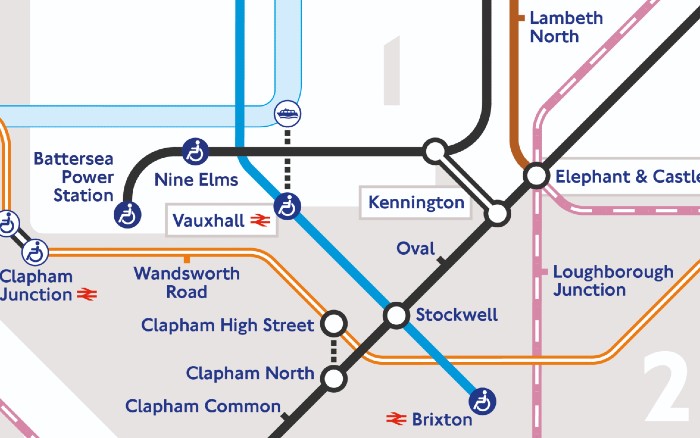



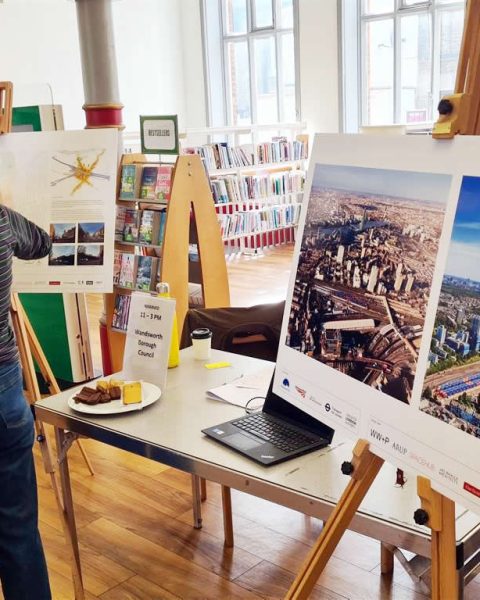



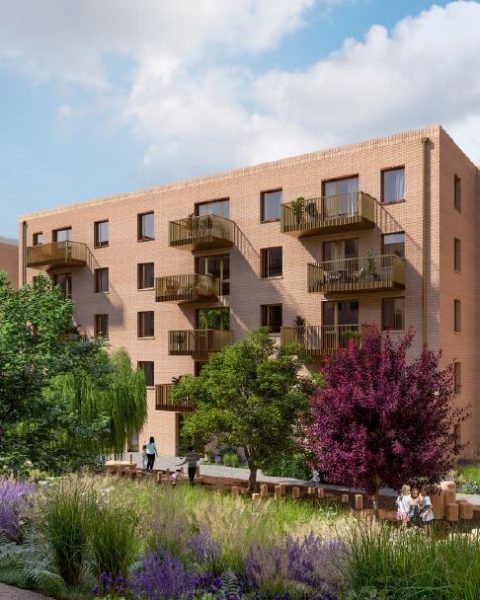
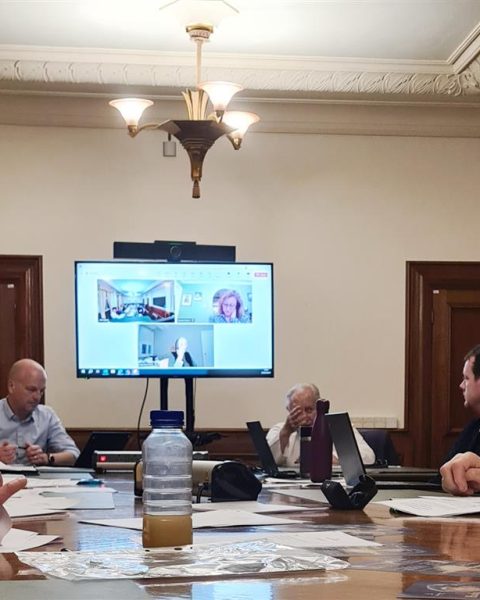
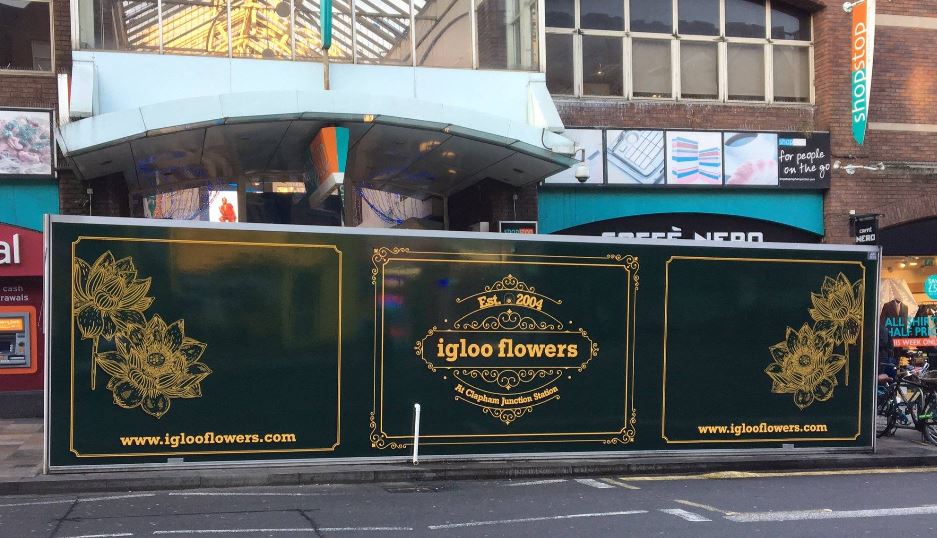




They have a point about overloading, 90% of the passengers alighting at CJ during rush hour wil not be Londoners, they will be out of towners using trains.
The BP station is not just for the new development, it covers a area of very poor transport infrastructure that is unique this close to central London.